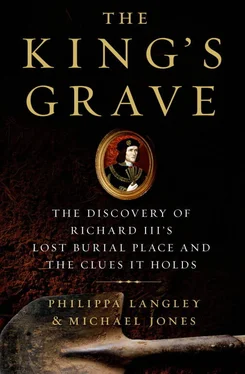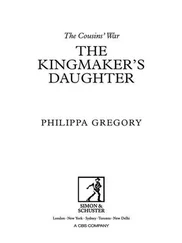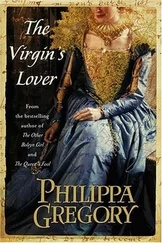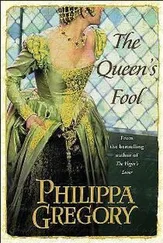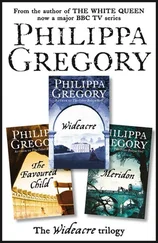For John Ashdown-Hill’s new evidence to confirm the Greyfriars burial see his ‘The Epitaph of Richard III’, Ricardian, 18 (2008), pp. 31–45. Also see Ashdown-Hill, Last Days of Richard III, Appendix 4, pp. 134, 168.
For Ashdown-Hill’s conclusion that Richard’s body was still at the Greyfriars site see his Last Days of Richard III, pp. 106–9.
For the law on burials, see the Burials Act 1857, section 25. The heraldic emblem of a boar has long antecedents, at least back to Roman times. It signified a fighter. Live wild boar do not seek out humans but when hunted, as they were in medieval days, will turn and fight. Richard’s best known motto was ‘loyaulte me lie’ – loyalty binds me. The former grammar school was owned by William Davis Ltd, Loughborough, who very kindly gave permission to carry out the GPR survey (2011) and archaeological investigation (2012).
Thanks to Adrian McInnes, Technical Director, and Paul Watkins, Project Co-ordinator. Thanks to Dr Raymond Bord, David Fiddimore, Dr David and Wendy Johnson, Gerry Martin, Fiona Nicolson, Dr Phil Stone, Jack Thomson for funding the GPR survey. The Mira Scanner for the GPR survey was provided by LTU. Englezo’s search had been successful; eight pits containing the mass grave of two hundred and fifty British and Australian servicemen from the Great War were discovered. The servicemen were reburied with honour in a new cemetery opened in France by the Prince of Wales. Using DNA profiling and forensic analysis, by 2010–11 over ninety of these remains had been successfully identified.
Chapter 2: The Great Debate
On Richard’s use of cavalry against Tudor, I am indebted to Richard Mackinder of the Bosworth Battlefield Centre and Tobias Capwell, Curator of Arms and Armour at the Wallace Collection. My survey is derived primarily from the introduction to Charles Ross’s Richard III, Keith Dockray’s Richard III and David Hipshon’s Richard III. For a chivalric reading of the Richard’s final battle see Jones, Bosworth 1485, and Tim Thornton, ‘The Battle of Sandeford: Henry Tudor’s Understanding of the Meaning of Bosworth Field’, Historical Research, 78 (2005). Such was the power of Tudor and Shakespearean propaganda that when a copy of the Act of Attainder against Clarence was found in the Tower archives in the late eighteenth century, the manuscript annotation of the discovery suggested that rather than being drawn up by Edward IV, ‘this instrument was formed by Richard duke of Gloucester’: University of Nottingham Archives: Me 2L2/12.
Edward of Middleham’s investiture as Prince of Wales in York from Berdern College Statute Book p. 48. Translated by Peter Hammond and Anne Sutton. I have taken Richard’s interment in the Greyfriars Church in Leicester as being 25 August 1485 based on the accounts of Polydore Vergil and Diego de Valera and the will of William Catesby, dated 25 August 1485. The Exhumation Licence from the Ministry of Justice also applied this instruction to shield human remains from the public gaze for the protection of the public.
Chapter 4: Yearning for a Noble Cause: Richard’s Early Career
The document is Christie’s Lot 47/Sale 5960. For the chivalric dimension to York’s clash with Henry VI’s government see Michael Jones, ‘Somerset, York and the Wars of the Roses’, English Historical Review, 104 (1989) and Mercer, Medieval Gentry. York’s solemn oath at St Paul’s Cathedral in March 1452 is recorded in Durham Cathedral Muniments, Register IV, f.92v.
The significance of Richard’s experience at Ludlow in 1459 has rightly been emphasized in Wilkinson, Richard.
On York claiming the throne see Michael Jones, ‘Edward IV, the Earl of Warwick and the Yorkist Claim to the Throne’, Historical Research, 70 (1997).
Keith Dockray and Richard Knowles, ‘The Battle of Wakefield’, Ricardian, 9 (1992) give us the best account of the terrible death suffered by Richard, Duke of York, Richard’s father. For the suspicion of Warkworth’s Chronicle that Richard had executed Thomas Fauconberg after he had received a royal pardon see Richard Britnell, ‘Richard Duke of Gloucester and the Death of Thomas Fauconberg’, Ricardian, X (1995).
For a different view, of Richard executing Lancastrians in the aftermath of Tewkesbury on the authority and orders of the king, see The National Archives (TNA), SC1/44/61 (4 July 1471). Richard’s expansion of retaining, in the aftermath of the settlement of the dispute between him and Clarence, is well described in Horrox, Richard III: A Study in Service, and Pollard, Richard III and the Princes in the Tower. Richard’s letter to William FitzWilliam is in Sheffield City Archives, WWM/D/98. Richard, Duke of York’s astonishing feat of arms on 20 July 1441 is recorded on Guillaume du Chastel’s tomb in the Abbey of Saint-Denis. The commission for the monument is from Honoré Champion, Prigent de Coëtivy, Amiral et Bibliophile (Paris, 1906).
For the importance this would hold for his son Richard see Richard Firth Green, ‘An Epitaph for the Duke of York’, Studies in Bibliography, 41 (1988). On Richard’s literary interests see Sutton and Visser-Fuchs, Richard III’s Books.
For Richard and his brother Clarence acting in common cause against Edward IV’s foreign policy, and its perceived manipulation by the Woodvilles, see Michael Jones, ‘1477 – The Expedition that Never Was: Chivalric Expectation in Late Medieval England’, Ricardian, XII (2001). The important new evidence of Richard mass-recruiting retainers within weeks of Clarence’s arrest is recorded in Durham Cathedral Muniments, Halmote Court Rolls, 1476–7 (which I owe to Professor Pollard). Chunxiao Wei, ‘Richard Duke of Gloucester’s Petition, 1478, and the Fate of Clarence’, Notes and Queries, 58 (2011) reminds us that Richard receiving a share of Clarence’s lands does not mean he was complicit in his death.
On Richard’s arbitration awards see Pollard, Richard III and the Princes in the Tower. Richard and his brother Edward sometimes clashed over Richard’s aggressive stance over Scotland, particularly in 1474–5: Peter Booth, ‘Richard Duke of Gloucester and the West March towards Scotland, 1470–83’, Northern History, XXXVI (2000). But his resumption of aggressive raiding tactics late in the reign was highly praised and his conduct of the 1482 campaign a triumph.
For an important reappraisal of the latter: Jackson Armstrong, ‘Local Society and the Defence of the Frontier in Fifteenth-Century Scotland: The War Measures of 1482’, Florilegium, 25 (2008).
Chapter 5: The Discovery of the Church and the Location of the Nave
Thanks to Peter O’Donoghue, York Herald at the College of Arms, London, for supplying the artwork for Richard III’s banner and standard. In 2000, Ken Wallace discovered the Hallaton Treasure in Leicestershire, the largest hoard of Iron Age coins.
Chapter 6: Seizing the Throne
For the general outline of events see Charles Ross, Richard III; Pollard, Richard III and the Princes in the Tower; Cunningham, Richard III; and Hicks, The Prince in the Tower. John Gigur’s comments are from Colin Richmond, ‘A Letter of 19 April 1483 from John Gigur to William Wainfleet’, Historical Research, 65 (1992). For Richard, Duke of York’s use of a reduced retinue of 300 men in 1450 see the letter of Humphrey Stafford, Duke of Buckingham, recently discovered in Surrey County Record Office, LM/ COR/1/19, and discussed in Ralph Griffiths, ‘Richard, Duke of York, and the Crisis of Henry VI’s Household in 1450–51: Some Further Evidence’, Journal of Medieval History, 38 (2012).
Читать дальше
